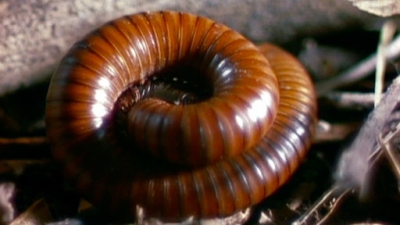
The Most Extreme Season 2 Episode 8 Stinkers
- TV-G
- September 21, 2003
- 46 min
The Most Extreme season 2 episode 8 explores the world of infamous stinkers in the animal kingdom. From the world's smelliest flower to the animal with the grossest defense mechanism, this episode showcases the best and worst of olfactory experiences.
The episode begins with the stinkiest flower in the world, the Rafflesia arnoldii. This flower is found in the rainforests of Southeast Asia and emits a putrid odor resembling rotting flesh. It attracts flies, which are its main pollinators. The Rafflesia arnoldii is so notorious for its smell that it has been nicknamed the "corpse flower."
Moving on to the animal kingdom, the episode introduces us to the African civet, a nocturnal mammal found in sub-Saharan Africa. The African civet secretes a smelly substance from its perianal gland, which it uses for marking its territory and communicating with other civets. The scent is so strong that it can linger in the air for hours.
Next up is the bombardier beetle, which defends itself from predators by releasing a noxious spray from its abdomen. The spray consists of a mixture of chemicals that react violently when combined, creating a hot and smelly reaction that repels attackers. The bombardier beetle is one of the best examples of chemical warfare in the animal kingdom.
The episode then introduces us to the striped skunk, one of the most recognizable stinkers in North America. The skunk releases a strong odor from its anal glands as a defense mechanism against predators. The smell is so strong that it can cause nausea, vomiting, and temporary blindness in predators. The skunk's odor is so potent that it can linger for days.
Moving onto the ocean, the episode introduces us to the hagfish. The hagfish is a slimy, eel-like fish that secretes a sticky slime from its skin when it feels threatened. The slime clogs the gills of predators, suffocating them and allowing the hagfish to escape. The slime also has a strong odor, which acts as a deterrent for potential predators.
The episode then turns to the hoatzin, a bird found in the swamps and rainforests of South America. The hoatzin has a unique digestive system that produces a lot of gas, which it releases as a defensive mechanism against predators. The gas smells like rotten eggs and acts as a deterrent for predators, allowing the hoatzin to escape.
Finally, the episode introduces us to the muskox, a large, shaggy mammal found in the Arctic. The muskox secretes a musky odor from glands near its eyes, which it uses to establish dominance and attract mates. The odor is so strong that it can linger in the air for long periods of time.
Throughout the episode, experts discuss the evolution and purpose of these stinky phenomena. They delve into the science behind the smells and explain how these seemingly unpleasant odors play important roles in the survival and communication of these animals.
Overall, The Most Extreme season 2 episode 8 provides a fascinating look into the world of stinkers in the animal kingdom. From flowers to fish, this episode showcases the unique and often surprising ways that animals use smell as a means of survival.
